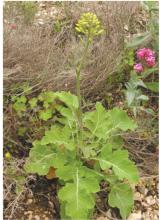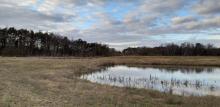LafargeHolcim is accelerating its efforts on biodiversity conservation and has signed an agreement with Fauna & Flora International, an NGO focused on biodiversity.
Under the agreement, Fauna & Flora International will perform an independent external review of the group’s existing biodiversity management plans at sites in Malaysia, Indonesia and the Philippines; contribute to the development of a groupwide strategy on karst* management since karst areas are an important habitat for unique and specialized fauna; identify opportunities for enhancing biodiversity in quarry rehabilitation; and organize a stakeholder dialogue bringing together an external expert group, local government, local NGOs and LafargeHolcim staff to consult on BMP recommendations.
Caroline Hempstead, group head of communications, public affairs and sustainable development, LafargeHolcim, says: “Biodiversity loss is a major global challenge. We aim to be good stewards of the land where we operate and demonstrate that proper management of quarries can reduce and reverse our impacts and even generate positive change for biodiversity. The new engagement work with Fauna & Flora International will play a key role in achieving our commitment.”
Dr Tony Whitten, senior adviser at Fauna & Flora International, said: “It is encouraging to see LafargeHolcim taking this significant step towards creating an environment where business has a long-term positive impact on biodiversity conservation.
"Fauna & Flora International works directly with businesses and the influencers of business across a range of sectors to bring about change that contributes to the protection of biodiversity in all its forms.”
Case Study
In the Philippines, the Group has collaborated with expert scientists from the Institute of Biology of the University of the Philippines and the Diliman Science Research Foundation to ensure that biodiversity and restoration of quarries is managed appropriately at the Group’s sites in different parts of the country.
This team of ecologists and biodiversity scientists monitor the sites and measure the level of restoration of the land. Results of the baseline study show a healthy environment and rich biodiversity, with 340 plant species and 230 wildlife species in a thriving ecosystem in the restored areas. Among the animals found was the Philippine tarsier, the world’s smallest primate.
* Karst is a special type of landscape that is formed by the dissolution of soluble rocks, including limestone, gypsum and dolomite. Karst regions contain aquifers that are capable of providing large supplies of water. Natural features of the landscape such as caves and springs are typical of karst regions.???








